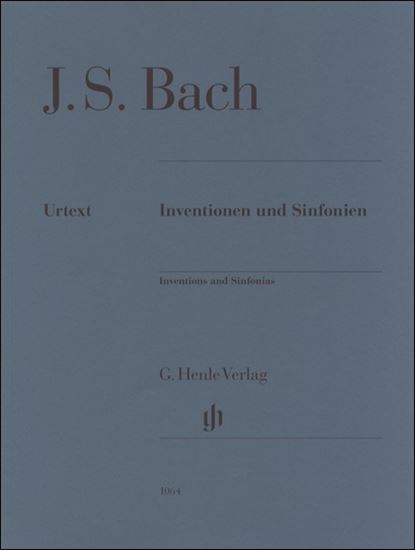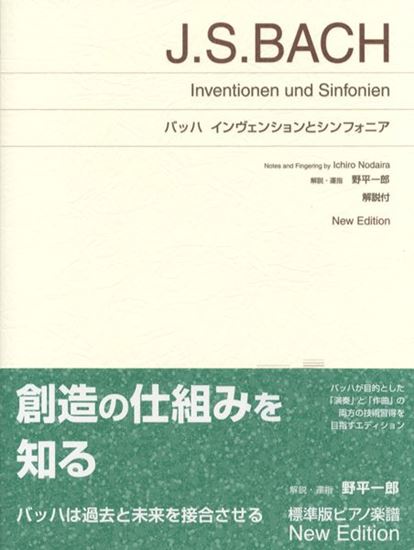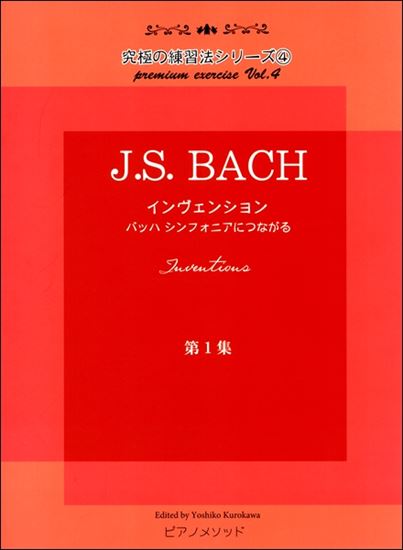Bach, Johann Sebastian : Invention Nr.8 F-Dur BWV 779
Work Overview
Genre:pieces
Total Playing Time:1 min 00 sec
Copyright:Public Domain
Commentary (3)
Author : Takamatsu, Yusuke
Last Updated: September 18, 2020
[Open]
Author : Takamatsu, Yusuke
F major, 3/4 time.
This is a vibrant piece that opens with fanfare-like ascending arpeggios. It consists of three exposition sections; the first and third expositions feature a canon where the lower voice follows the upper voice one measure later.
The second exposition (from m. 12) opens with the upper voice imitating the C major theme presented by the lower voice, but instead of continuing as a canon, it modulates repeatedly, starting in G minor and utilizing previously introduced motives.
From the third exposition (from m. 26), it becomes a canon again, but the recapitulation of the theme's opening is omitted, corresponding to measures 4-12.
Author : Hayashikawa, Takashi
Last Updated: March 15, 2018
[Open]
Author : Hayashikawa, Takashi
Measures 1-7 form a canon and are constructed from the material of this section.
Musical example courtesy of Bärenreiter Verlag
Author : Ooi, Kazurou
Last Updated: March 12, 2018
[Open]
Author : Ooi, Kazurou
No. 8 in F major
I recall there being a specific order for learning Bach's Inventions, though I can't remember exactly when. I believe it was something like No. 1, No. 8, No. 4, and so on. While I don't know who determined this order, in my opinion, Invention No. 8 is classified as quite a difficult piece among the Inventions. I'm not sure why it was chosen as the second piece to play from the beginning, but technically, it is very advanced and cannot be played easily. I will explain the reasoning that led to this conclusion. First, the key of F major is very lively and strong, as can be clearly seen in Bach's other works in F major. The Italian Concerto is a typical example. Naturally, there is no tempo marking at the beginning of Invention No. 8. While it can be played slowly, considering the characteristic of F major, it should not be slow; it should be energetic. Therefore, playing the eighth notes short and staccato adds to its vitality. If that's the case, all eighth notes written in this piece should be played short and staccato. Indeed, this is generally how it is played. Consequently, the sixteenth notes become very fast passages, leading to various technically challenging sections. No matter how much one tries to adapt, playing passages with the left hand alone, specifically using fingers 3, 4, and 5, cannot be avoided. The first beat of the left hand in measures 19-20 is a typical example. Due to the character of its key, this Invention naturally takes a fast tempo, resulting in the sixteenth notes also being played at a considerable speed. Instructors might consider placing this No. 8 at the very end of the learning sequence. It is that difficult of a piece. For instance, the first beat of measure 11 inevitably requires the fingering 4345. This is because the second beat, GFEF, must be played with 1232, which necessitates the preceding beat to be 4345. Learners will find Invention No. 8 considerably difficult if their finger shape is not correct. Correct your finger shape, and then begin practicing. The simplest practice method is to decisively choose the fingering 4345 for the first beat of measure 11 in the left hand, and then repeatedly loop just this first beat. As you do this, you may feel strain in fingers 3, 4, and 5 of your left hand, or notice muscle development, or even extreme fatigue in your fingers. Such sensations also indicate "success." Normally, there aren't many opportunities to play with fingers 3, 4, and 5 at this tempo. Consider this a good opportunity to train them. Additionally, consider employing techniques like those of Pischna, or using thirds, and various other means to overcome these difficult passages. It also serves as significant finger training. Adults and instructors who likely played this piece long ago should try challenging it once more. You will likely realize how formidable it is, and above all, it will serve as an excellent etude.
PTNA & Partner Channel Videos(10items) View More
Sheet MusicView More
Scores List (38)

カワイ出版

(株)ヤマハミュージックエンタテインメントホールディングス
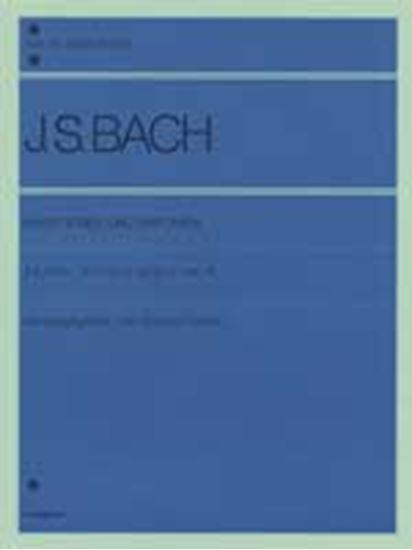
(株)全音楽譜出版社
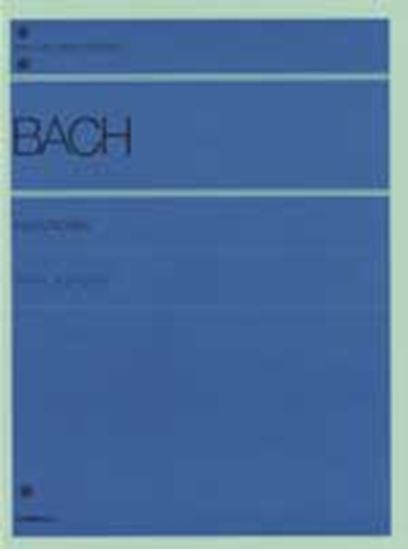
(株)全音楽譜出版社

(株)ドレミ楽譜出版社

(株)ドレミ楽譜出版社

(株)ドレミ楽譜出版社

(株)ドレミ楽譜出版社

(株)音楽之友社

(株)全音楽譜出版社

(株)音楽之友社

(株)音楽之友社

(株)ドレミ楽譜出版社

(株)ドレミ楽譜出版社

(株)ドレミ楽譜出版社

(株)ドレミ楽譜出版社

カワイ出版

(株)渓水社

(株)音楽之友社

(株)全音楽譜出版社

(株)エー・ティ・エヌ

(株)全音楽譜出版社

カワイ出版

(株)音楽之友社

(株)音楽之友社

(株)ヤマハミュージックエンタテインメントホールディングス

Neil A. Kjos Music Company














